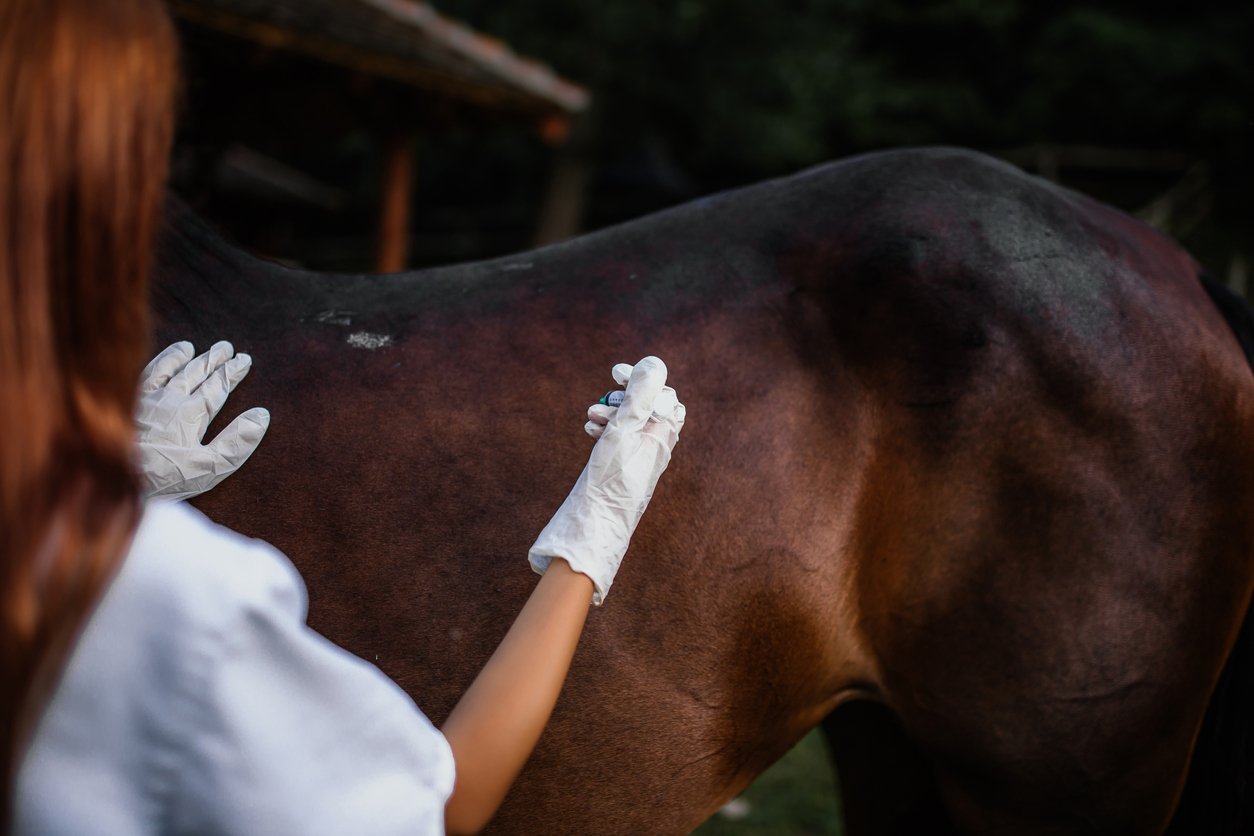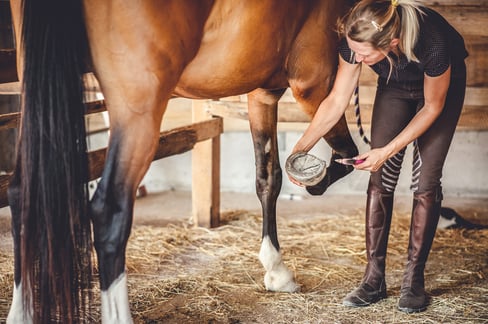Table of Contents
You’re riding along, enjoying your time with your horse when suddenly they can’t jump or trot or do any of their usual activities without reluctance.
You know they could be in pain, but what’s the culprit?
It could be a sacroiliac horse joint problem.
A crucial joint that allows for a horse’s movement, the sacroiliac in horses is commonly injured and often mistaken for other problems. This can have a detrimental effect on their mobility and their ability to participate in a sport.
That’s why we’re here to break down everything you need to know about protecting your horse from a sacroiliac injury, as well as how to handle treatment if it’s something that’s already troubling your horse.
Horse Sacroiliac Joint 101
Before we dive into the problems associated with a horse sacroiliac joint, it’s important to understand just where the joint is, and why it is so important.
Horse anatomy can be complex, so it goes without saying, we’re just here to give you an overview, and any concerns you may have about your horse’s sacroiliac joint pain should be addressed with your vet.
Now we’ve got that disclaimer out of the way, let’s get into this anatomy lesson!
Horse Sacroiliac Joint Anatomy
In horses like in humans, the sacroiliac joint is the connection between the pelvis and the spine in a horse’s body. There are actually two joints here, one for each hind limb, allowing them to articulate in connection with the spine.
Serving the role as a motor to the horse, the sacroiliac horse joint translates action from their hind legs through their back into a forward motion, allowing your horse to gallop, run, jump, and trot. These joints actually have a relatively small range of motion and are supported by strong ligaments to keep your horse stable.
The ligaments supporting the horse sacroiliac joint are:
- Dorsal sacroiliac ligament
- Ventral sacroiliac ligament
- Sacrotuberous ligament
The diagram below shows the location of the sacroiliac horse joint.
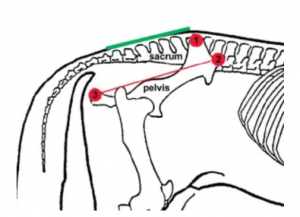
Sacroiliac Horse Symptoms
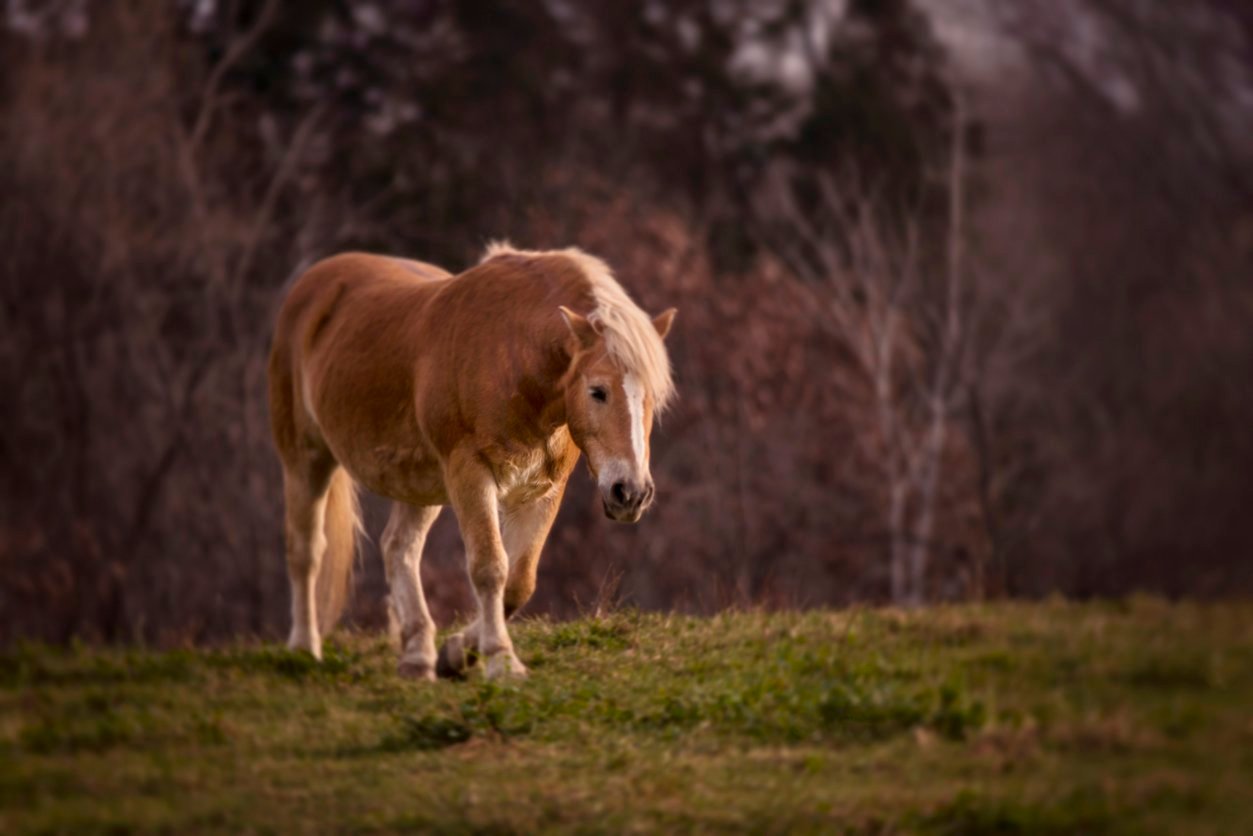
As your horse’s caregiver, you need to be a symptom detective, always watching for signs your horse’s body is in distress. You have to keep your eyes on the changes in their behaviour alongside their reactions to training and touch.
And when it comes to sacroiliac horse pain, there are a few telltale signs they are experiencing pain in this key location.
Sacroiliac horse symptoms include:
- Gait changes, such as “bunny hopping”
- Difficulty picking up hind legs
- Reluctant to move forward or participate in usual activities
- Reduced muscle mass in the hindquarters
- “Hunter’s Bump” becomes more pronounced
- Muscle spasms
- Poor posture
- Shortened stride
If you notice one or more of sacroiliac joint horse symptoms, or your horse’s behaviour has changed suddenly, be sure to pick up the phone and call the vet so they can be addressed right away.
Horse Sacroiliac Pain Causes
If you could avoid your horse experiencing pain, you certainly would.
That’s why it’s important to know what causes horse sacroiliac pain.
There are three categories that cause horse sacroiliac pain:
- Hind limb trauma
- A training or conditioning injury
- Other hind limb lameness
The first category, trauma to the hind limbs, is going to present as sudden and acute. It is typically due to a slip or fall. Any trauma that impacts the supporting ligaments can be painful and makes it almost impossible for the horse to move. In some cases, the pelvis fracturing can also end up creating damage to the sacroiliac joints as they are interconnected and rely on each other to work properly.
The second source of injury and horse sacroiliac pain is the result of a training injury or poor conditioning. Like humans, horses need to warm up cold muscles before beginning, rest sufficiently, and avoid poor form while in motion. In this case, that translates to a good warm-up walk before beginning training, turning out in the pasture resting up in between training days and allowing the horse to move “back-to-front”.
This is a term that describes a technique focused on gently guiding the horse’s energy from its hindquarters to the front, rather than being a “front-to-back” rider constantly pulling on the reins. It would be the equivalent of driving with a handbrake on constantly, rather than removing your foot from the gas at the appropriate time. Riding like this can cause unnecessary tension and stress in the sacroiliac joints, leading to pain and injury.
The final category to mention is pain associated with another hind limb injury or condition, like arthritis or a suspensory ligament injury. When a lame horse has pain in one part of its hindquarters, it can often compensate or carry weight differently in order to relieve pressure elsewhere. This can lead to wear and tear injury in the sacroiliac horse joint.
Overall, injuries and pain in horse sacroiliac joints are highly prevalent yet treatable. The key to treating them is a quick response. If your horse has experienced trauma or isn’t acting like themselves, be sure to call the vet.
Sacroiliac Horse Pain Prevention
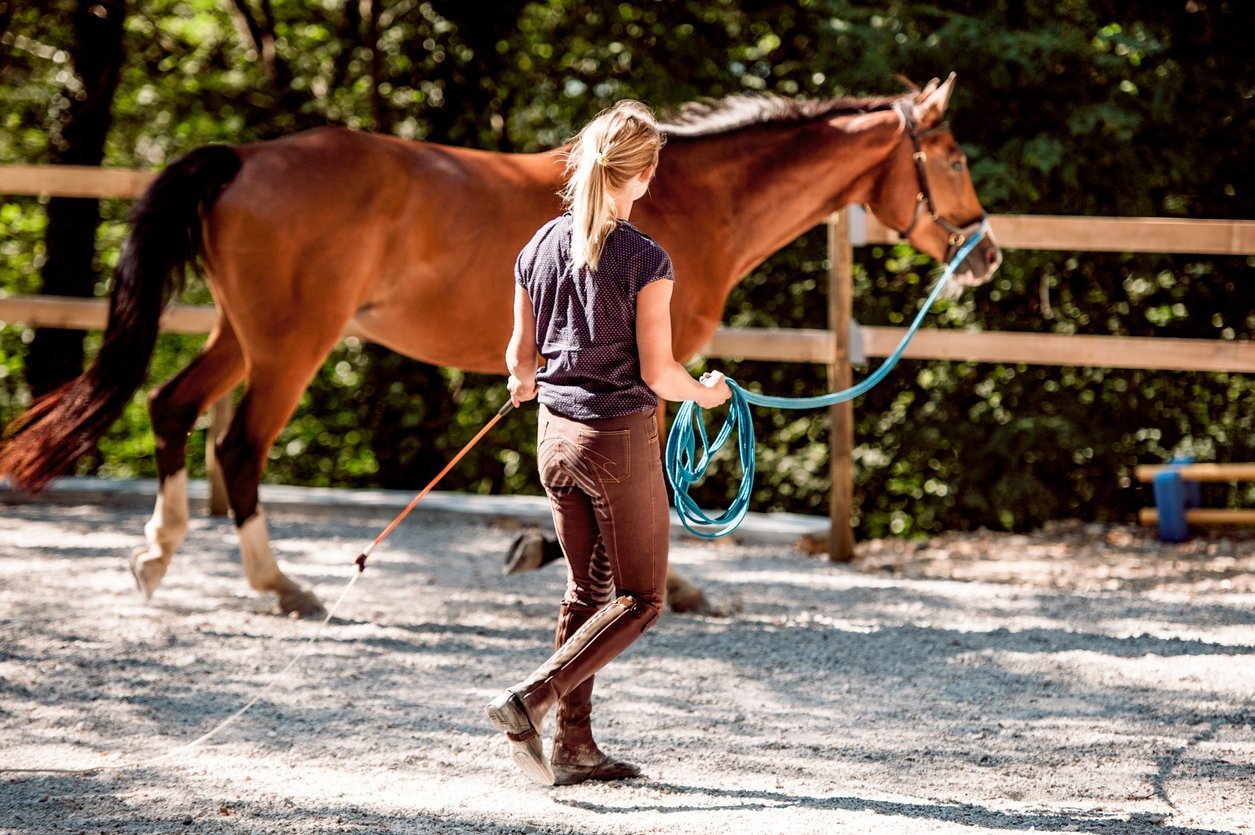
We don’t want our equine companions to suffer. So naturally, you’d want to prevent pain before it happens.
When it comes to protecting the sacroiliac joint in horses, there are plenty of options to keep this workhorse joint (see what we did there?) in good working condition.
No matter what you choose, you should consult with your vet to make sure your prevention plan aligns with your specific horse’s unique needs.
Equine Joint Supplements
Keeping a horse’s sacroiliac joint healthy is one of the best ways you can prevent it from getting injured.
And like in many conditions, health starts on the inside, at the source.
The sacroiliac joint is one of the most key joints in a horse’s body. It needs to be strong, and have plenty of support from surrounding structures. An equine joint supplement can help you accomplish both of those goals.
By offering your horse ingredients that help build cartilage and stop deterioration, as well as reduce inflammation from daily stress on ligaments, horse muscles, and joints, you can ensure their sacroiliac joint is supported and able to defend against injury if it happens.
A supplement for horse sacroiliac pain should:
- Promote mobile, supple joints and reduce stiffness
- Help support collagen and connective tissues
- Protect tissues in the joint
- Be easy to administer
- Offer scientific backing and research to their claims
- Contain 100% active ingredients
Now that might seem like a long list at first glance, but Integricare’s TRI-ACTA for Equine checks each one of those boxes off and more.
With high-quality ingredients, including two kinds of glucosamine, TRI-ACTA for Equine offers the backing of being Health Canada approved, and the designation as a Veterinary Health Product, as well as a zero filler formula. That way, you can rest easy knowing your horse is getting the health boost they need and none of the things they don’t.
Training Right
Keeping up with a regular training schedule is another piece of the puzzle when it comes to preventing horse sacroiliac joint pain.
When your horse has strong internal support in the form of their muscles, they are less likely to hurt their sacroiliac joint. Why? Their cores do the heavy lifting just like ours, and stiff, tight hindquarters compensating for lack of core strength can lead to a small injury spiralling out of control.
Making sure a horse’s topline and gluteal regions are strong and well defined is one way to protect them from a sacroiliac joint injury.
In terms of training to reach those goals, you’re going to need to try techniques that focus specifically on stretching and strengthening the hindquarters and core.
Training to support the sacroiliac horse joint may include:
- Using lunging aids to strengthen supporting muscles
- Implementing ground poles in training
- Stretching exercises to improve flexibility and release tension
- Hacking uphill, backwards, on small inclines repeatedly
- Doing transition work under the saddle (walk to trot, trot to canter)
Each of these exercises should be done in small doses, and consistently. Making regular conditioning and topline work part of your training routine is the best way to protect your horse from sacroiliac pain.
Manage Weight
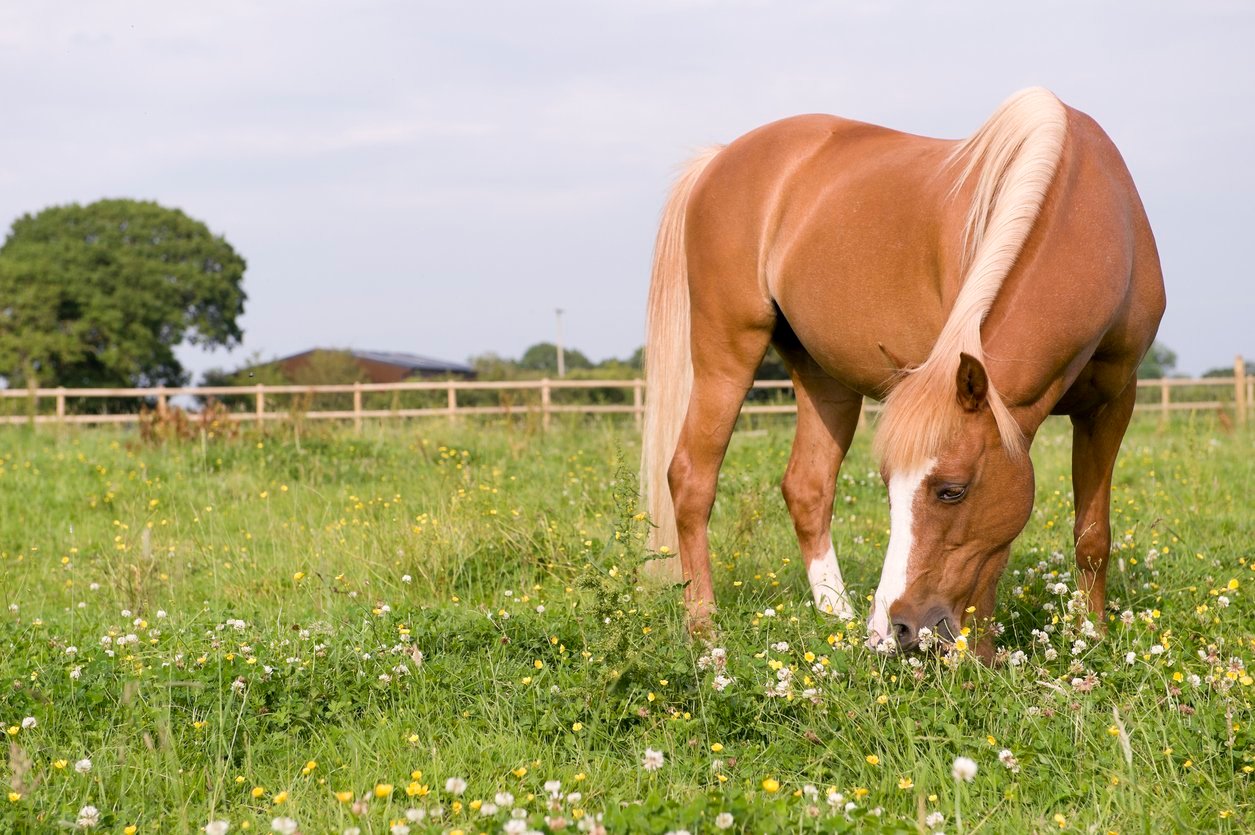
The final tip we have for preventing horse sacroiliac pain is all about keeping the pounds off their joints.
The old saying, “as hungry as a horse” has to come from somewhere! In just four hours, horses can eat 24 hours’ worth of grass. That’s obviously way too much grass, and it can especially put your horse at risk of laminitis if they eat too much lush pasture grass.
Simply put, obesity is one of the most significant threats to healthy joints. It can lead to arthritis and other joint diseases. That spells trouble for your horse’s sacroiliac joint.
Combined with a good exercise plan, the right diet should help your horse reduce their weight while getting all of the essential nutrients and components of its diet. Horses need a mixture of carbohydrates, protein, fats, vitamins, and minerals. They often eat the most carbohydrates, mostly hay or grass.
If you’re trying to reduce your horse’s weight, there are a few things you can do to help them get to a goal weight that reduces the stress and pressure on their joints.
In the table below, we have outlined a few weight-loss strategies for reducing horse sacroiliac pain.
| Weight Loss Strategy | Considerations |
| Reduce grazing |
|
| Change supplementary feeding practices |
|
| Fire up their metabolism |
|
| Increase their exercise |
|
One thing to keep in mind when you’re trying to help your horse lose weight is to maintain a reduced, but still balanced diet.
Guidelines state that you should not reduce your horse’s feed below 1.5% of their current body weight. This can put your horse at risk of developing other medical conditions due to a deficiency in its diet. If you feel you need to reduce a horse’s feed intake, even more, consult with a veterinarian first to avoid this scary situation.
Horse Sacroiliac Pain Treatment & Recovery
Caring for horse sacroiliac pain doesn’t have to be difficult.
There are several great treatment options to consider, and depending on your horse’s unique needs, your vet will help you decide which is the best solution.
One thing to keep in mind with horse sacroiliac pain is the need to catch these injuries early and seek treatment. Otherwise, you can end up with a more severe issue.
There is an “injury cycle” that often occurs with sacroiliac joint problems where a minor initial injury occurs that may not be perceived by humans. The horse then has a strong muscle spasm to safeguard the joint, the pain and inflammation reduce because of this, but the joint becomes stressed due to the tightened, abnormal hindquarters. This opens up the risk for arthritis and inevitably leads to more pain. Speak to your vet about any changes in their performance and condition so they can complete more thorough diagnostic work and stop horse sacroiliac pain in its tracks.
Horse Sacroiliac Joint Injection
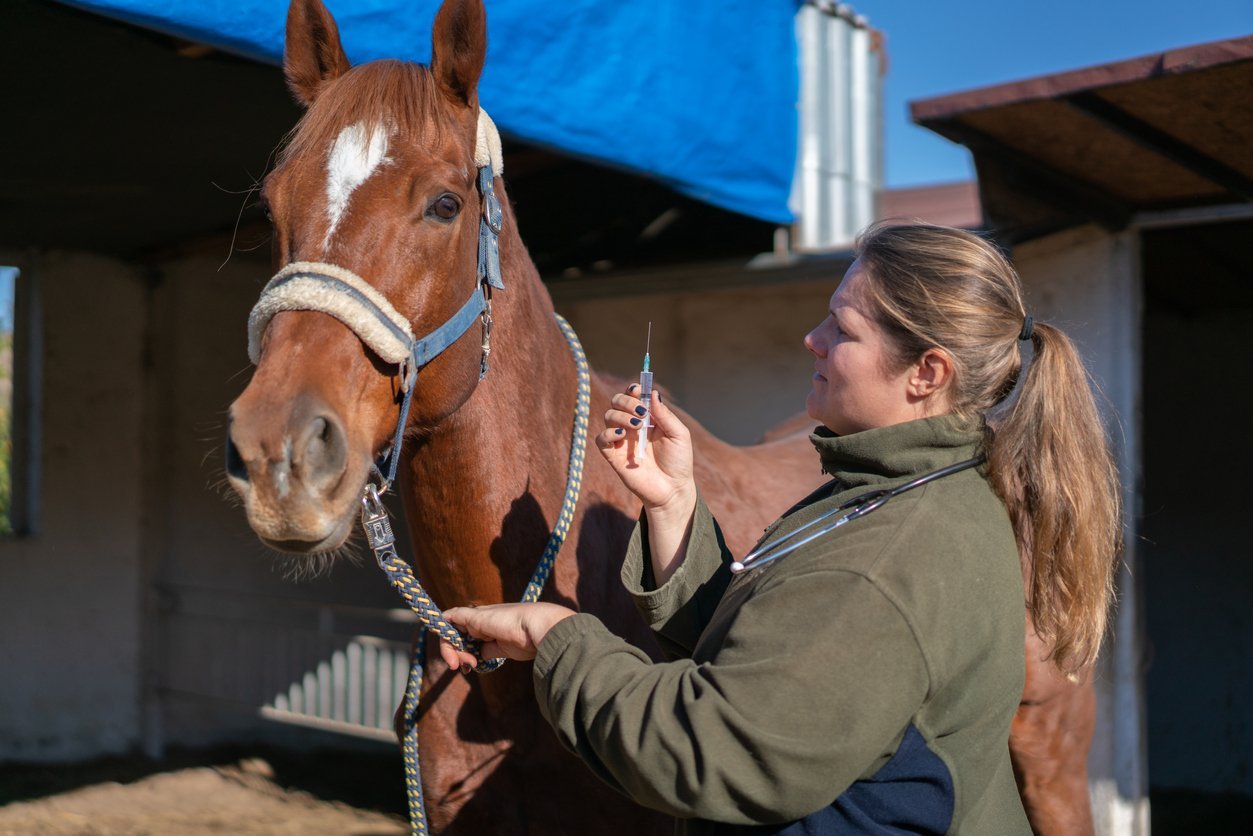
Offering your equine friend targeted relief from pain, horse sacroiliac joint injections are a great option to treat severe pain while you use other techniques to help their joints heal.
Typically, an injection into the sacroiliac joint contains both steroids and hyaluronic acid to address both pain and mobility issues. Usually, equine vets will administer a pain killer alongside a sedative prior to completing the injections in order to make your horse most comfortable. In order to keep them comfortable following horse sacroiliac joint injections, the equine vet will also likely include phenylbutazone as part of the pre-operative procedure as well.
Sometimes, injection into both left and right joints is needed. Other times, it is only necessary to address one joint at a time. Your vet will help determine what is necessary and if more injections are needed.
Horse sacroiliac joint injections are usually most effective when paired with one or more other modalities, such as rest, physiotherapy, and supplements. Simply injecting their joint will not solve your problems altogether. The root of the problem needs to be addressed as well, or you will be dealing with the same issues in no time.
Equine Joint Supplements
Pain and inflammation are at the heart of many horse sacroiliac issues. You need to address those at the source, or you will end up in that injury cycle we mentioned earlier.
A tool you can add to your horse’s sacroiliac injury recovery plan that addresses both pain and inflammation, as well as improving cartilage and synovial fluid is an equine joint supplement.
And how is that possible, you ask?
It’s all about the ingredients that the supplement includes.
A supplement that will help heal horse sacroiliac pain should include the ingredients outlined in the table below.
| Ingredient | How It Helps Horse Sacroiliac Pain |
| Glucosamine |
|
| Chondroitin |
|
| MSM |
|
| Hyaluronic Acid |
|
As you can see, each ingredient has a role to play in helping improve painful sacroiliac horse symptoms.
But not all supplements are created equally. You need to find a supplement like Integricare’s TRI-ACTA H.A. that not only has the highest quality ingredients but is also easy to feed and doesn’t break the bank. TRI-ACTA H.A. is a maximum strength supplement that comes in a powder format which allows you to add a small, but therapeutic dose to your horse’s daily feed. This makes it more effective, and it means you get more bang for your buck out of every serving than other options on the market.
Alternative Therapies

One of the most common treatments used alongside other modalities we’ve listed here is equine physiotherapy.
Physio, like in human medical terms, is all about both short and long-term healing goals. In the short term, pain relief and inflammation reduction are the primary goal, as well as improving function and stability in the area. In the long term, you want to focus on ensuring this acute injury doesn’t become a persistent, chronic dysfunction.
Before you consider physiotherapy for treating horse sacroiliac pain, you’ll need to get your vet to rule out a fracture or other trauma to the pelvis to make sure you’re not worsening things for your equine pal.
Other alternative therapies for treating horse sacroiliac pain include:
- Acupuncture
- Massage
- Heat and cold therapy
- Electrotherapy
- “Taping” techniques to stabilize the pelvis
While it can be tempting to try these out for yourself and approach this in a DIY manner, you must consult your equine veterinarian before implementing any physical therapy or training at home. Plus, they can help you get in touch with a professional practitioner, and help answer any questions you may have about trying one therapy or another.
Rest
While there is nothing groundbreaking about this treatment for sacroiliac horse symptoms, rest is often the first thing prescribed by a vet.
Whether your treatment plan includes one or all of the modalities we have mentioned here, rest is often the first step to getting better.
Rest helps reduce inflammation and stress on the joints, and likely will need to occur for at least a week to solve the problems at hand. It can be beneficial to helping other treatments like horse sacroiliac joint injections become effective. Horses’ bodies need time to recover, especially if they are involved in a performance sport like jumping where their sacroiliac joint is regularly put under strain.
That doesn’t mean you should just let your horse stay in the stall for a week, however. In fact, that can make things worse. Rather, you should focus on gentle exercises like hand-led walks and turning them out in the pasture after a few days of stall rest.
Common Questions on Sacroiliac Horse Problems
Any good horse owner is always focused on learning more about their equine pal, and asking questions can help you get to the root of your horse’s problem more quickly.
We gathered up some common questions about horse sacroiliac joint problems so you can get the answers you need to start helping your horse feel their best as soon as possible.
What Causes Sacroiliac Joint Pain in Horses?
Horse sacroiliac pain can be caused by a myriad of different problems. Most commonly, it is due to regular wear and tear on their bodies, especially from training and competing. It can also be caused by poor muscle definition and lack of internal support, or when horses need to compensate for other lameness in their hindquarters. The final cause of sacroiliac joint pain is trauma.
What Are Horse Sacroiliac Joint Injections?
Horse sacroiliac joint injections are targeted at the location of the pain and inflammation in their sacroiliac joint. They are often a combination of anti-inflammatory medications, steroids, and hyaluronic acid. The aim of these injections is to reduce pain quickly and help aid the horse in recovery.
Start Improving Horse Sacroiliac Pain
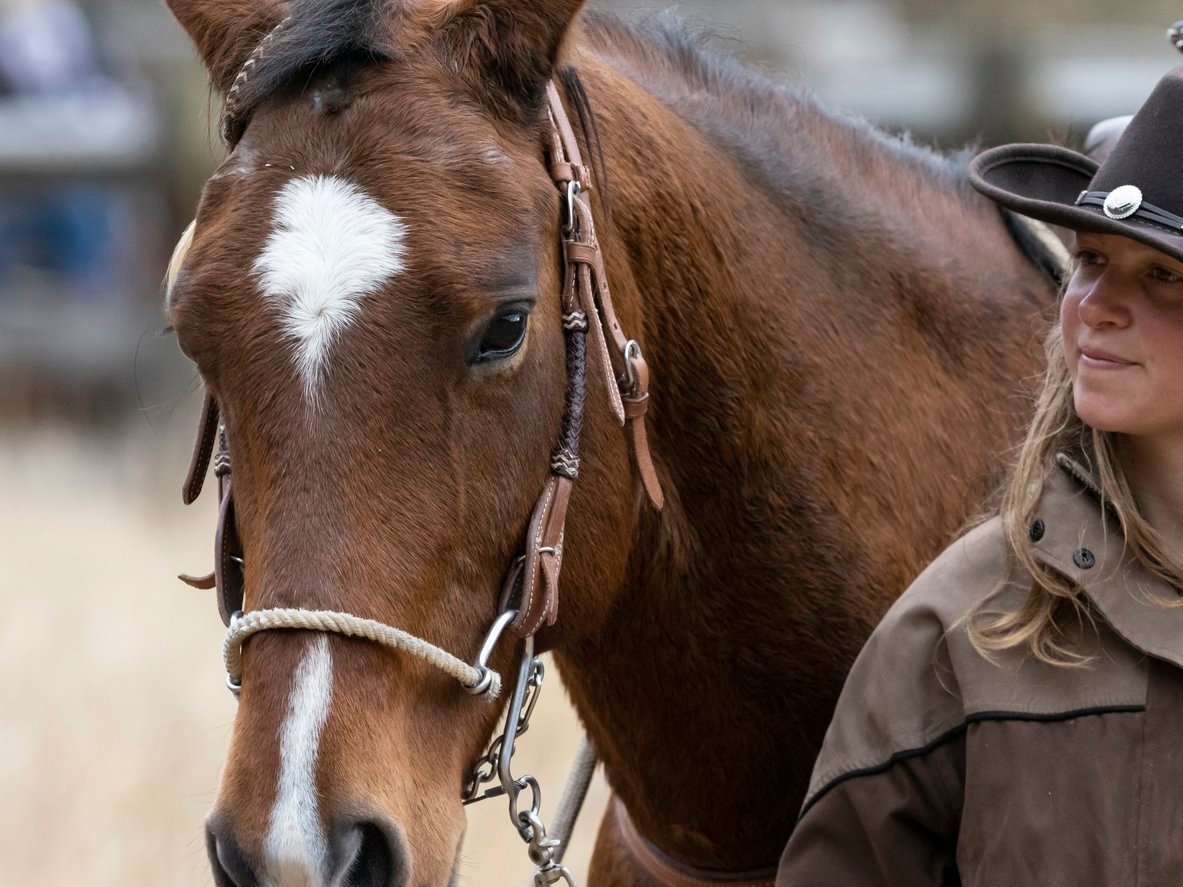
Reducing injuries and pain in horse sacroiliac joints comes down to preventing injury, encouraging a healthy diet, and creating a balanced training and conditioning plan to create strong hindquarters.
It’s also important to support the hard work you’re doing on the outside with an equine joint supplement like TRI-ACTA on the inside. By feeding a supplement that includes ingredients like glucosamine, you can not only repair cartilage and reduce inflammation but stop it from deteriorating in the first place.
Consider it the perfect complement to your other preventative measures, and be sure to think of TRI-ACTA H.A. when you have a horse in recovery from a horse sacroiliac joint injury. The addition of hyaluronic acid to our regular strength formula helps keep your horse’s joints mobile and improves the viscosity of its synovial fluid.
TRI-ACTA H.A. for Equine
Our maximum strength formula is perfect for horses that are ageing, experiencing arthritis and stiffness, are in training and competition, or under a heavy workload.
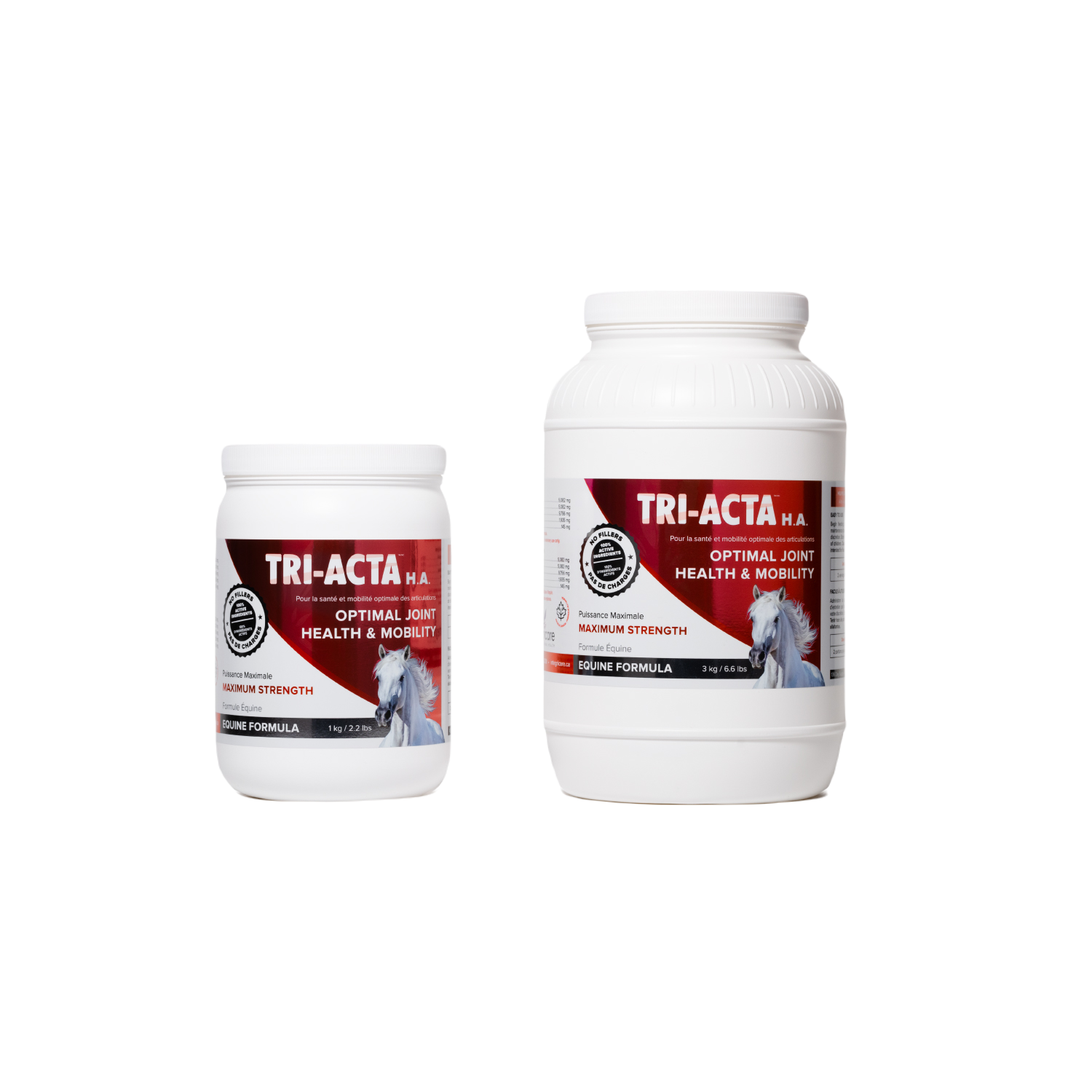
There’s neigh doubt about it — now you have the knowledge you need to help your horse avoid painful sacroiliac joint injuries!
Newsletter Signup
Subscribe to our newsletter to receive the latest news and exclusive offers.
.jpg?height=2000&name=Cliick_Integricare-DISPLAY-REVISEDV2%20(1).jpg)
Proactive & Therapeutic Joint Supplements
When given daily, Integricare joint supplements recover bone and joint injuries faster and help prevent mobility injuries from happening in the first place.

